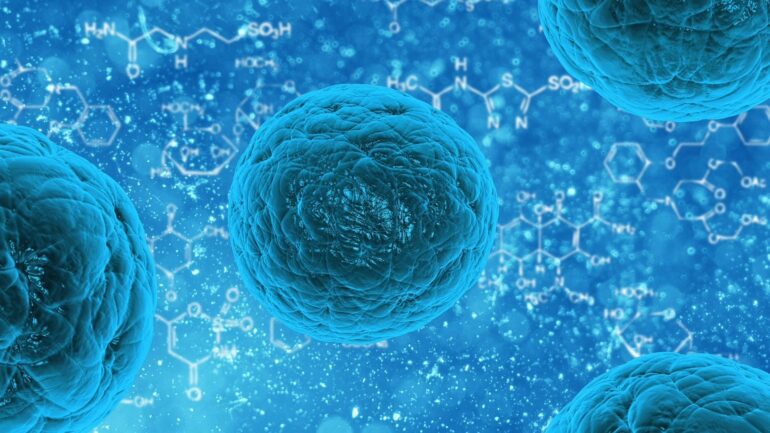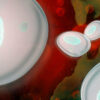Within a cell, the nucleus is surrounded by the nuclear envelope—two layers of phospholipid membrane that prevents the nucleus mixing with other parts of the cell, thus protecting the cell’s DNA from outside damage.
However, the nuclear envelope is sometimes broken and ruptured when it undergoes strain. This can occur when the cytoskeleton (a network of fibers acting as a scaffold and give it a stable structure) exerts pressure on the nucleus.
A new study, led by Dr. Monica Agromayor of the School of Immunology & Microbial Sciences, illuminates how pressure is relieved from the cytoskeleton.
“Uncovering the mechanisms that underpin rupture repair is a fundamental question in cell biology, and a better understanding of this process has broad implications for human diseases such as cancer, cardiovascular disease, or autoimmunity,” notes Dr. Agromayor.
Research indicates that a group of proteins known as the ESCRT machinery is responsible for resealing the nuclear envelope.
The paper, published in Developmental Cell, focuses on a protein associated with ESCRT, named BROX. It shows that BROX is the key protein in relieving pressure from the cytoskeleton, thereby allow the nuclear envelope to reseal.
The ESCRT machinery attaches BROX to the site of rupture on the envelope. This allows BROX to bind to the LINC complex—a group of proteins that connect the nuclear envelope to the cytoskeleton, allowing it to apply excessive pressure on the nuclear envelope.
BROX binding leads to LINC being removed from the rupture site. This reduces the stress enforced by the cytoskeleton, allowing the nuclear envelope to repair itself.
The results support growing evidence that the nucleus is an organelle that can interact with its cellular environment, as opposed to just being a protective case for DNA.
Significantly, these results could also have implications for cancer research as a damaged nuclear envelope is associated with cardiovascular diseases and cancer. For example, BROX gene mutations have been found in familial nonmedullary thyroid cancer. Future research can investigate whether BROX mutations contribute to tumors.
Speaking about the team that conducted the research, Dr. Agromayor said, “This multidisciplinary work shows the importance of collaborative research. Besides the close collaboration with Juan Martin-Serrano, we were fortunate to join forces with the laboratory of Sergi Garcia Manyes from the Physics Department at King’s.”
More information:
Samuel S. Wallis et al, The ESCRT machinery counteracts Nesprin-2G-mediated mechanical forces during nuclear envelope repair, Developmental Cell (2021). DOI: 10.1016/j.devcel.2021.10.022
Provided by
King’s College London
Citation:
Research uncovers how damaged cell nucleus reseals and repairs itself (2021, December 8)



